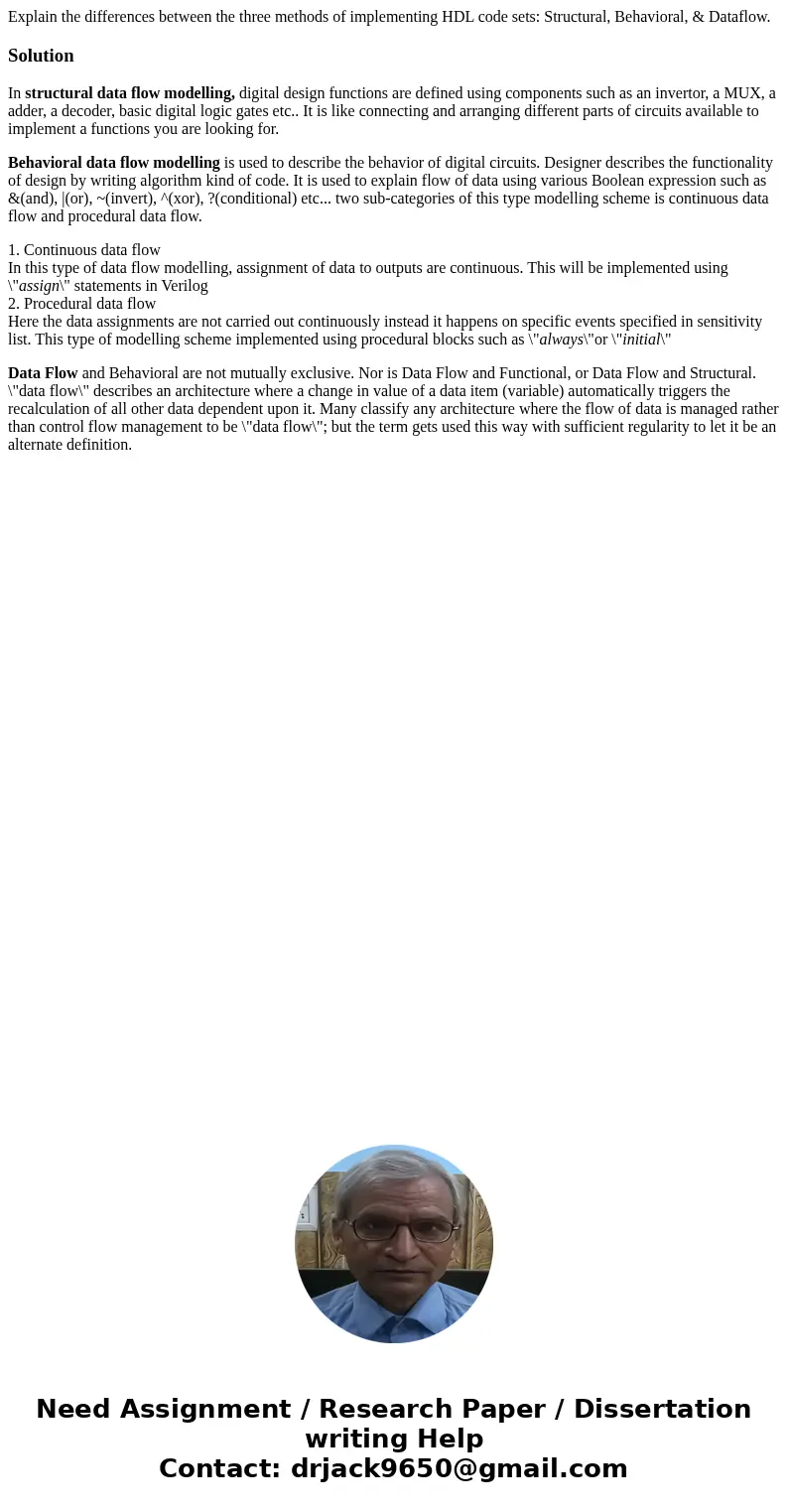Explain the differences between the three methods of impleme
Solution
In structural data flow modelling, digital design functions are defined using components such as an invertor, a MUX, a adder, a decoder, basic digital logic gates etc.. It is like connecting and arranging different parts of circuits available to implement a functions you are looking for.
Behavioral data flow modelling is used to describe the behavior of digital circuits. Designer describes the functionality of design by writing algorithm kind of code. It is used to explain flow of data using various Boolean expression such as &(and), |(or), ~(invert), ^(xor), ?(conditional) etc... two sub-categories of this type modelling scheme is continuous data flow and procedural data flow.
1. Continuous data flow
In this type of data flow modelling, assignment of data to outputs are continuous. This will be implemented using \"assign\" statements in Verilog
2. Procedural data flow
Here the data assignments are not carried out continuously instead it happens on specific events specified in sensitivity list. This type of modelling scheme implemented using procedural blocks such as \"always\"or \"initial\"
Data Flow and Behavioral are not mutually exclusive. Nor is Data Flow and Functional, or Data Flow and Structural. \"data flow\" describes an architecture where a change in value of a data item (variable) automatically triggers the recalculation of all other data dependent upon it. Many classify any architecture where the flow of data is managed rather than control flow management to be \"data flow\"; but the term gets used this way with sufficient regularity to let it be an alternate definition.

 Homework Sourse
Homework Sourse